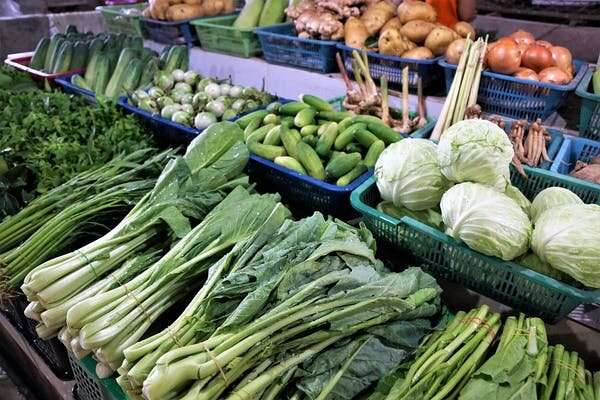Lessons from China: Ensuring no one goes hungry during coronavirus lockdowns

More than 230 million people in China faced mobility restrictions during the height of the COVID-19 pandemic amid .
One of the top concerns for government officials and citizens alike was access to food. Sporadic reports of panic food buying, food price spikes and concerns about the freshness of food appeared on Chinese social media.
Yet food supplies and food prices in China have . Because food shortages might become a for many countries amid the rapid spread of the virus all over the world, there's a lot to learn from China's food security measures.
Here's how they did it.
Diverse food outlets
An important factor in maintaining food security was the diversity of urban food outlets in Chinese cities. The epidemic provided an unexpected run by the private sector, known as "" in China.
While millions were stuck at home, online food markets became the food retail option of choice. In cities where e-commerce in shops and restaurants is well-established, food buying was quickly transferred from offline to online.
It's estimated people under 25 years of age buying fresh produce from online markets . Some of the most popular online food markets experienced sales boosts of 470 percent over 2019.
Millions of online food orders are placed everyday and delivered to people's doorsteps or to lockers within housing complexes for pick up.
The 'vegetable basket program'
The success of online food markets in China wouldn't have been possible without the long-term implementation of the state's urban food security policy known as the "." Proposed in 1988, the program mandates that city mayors are responsible for the provisioning, affordability and safety of non-grain foods, particularly fresh produce and meat.
Wuhan, the epicentre of the coronavirus outbreak, was among 35 other major cities for its performance in implementing the program.

Cities got good marks for improvements like delivery facilities in residential compounds such as passcode-protected cabinets for dropping off and picking up food, and the availability and accessibility of other types of food outlets such as supermarkets, small food shops and most importantly wet markets.
The strict evaluation ensured the diversity and extensive network of food sources for fresh produce and meat in every neighbourhood. When the COVID-19 pandemic hit, high-scoring cities were able to adapt and respond to most food insecurity.
Local governments set specific goals for self-sufficiency rates of different kinds of food to demonstrate their commitments to the vegetable basket program.
The city of Nanjing, for example, with a population of eight million, set a goal of 90 percent self-sufficiency for leafy vegetables for the period of 2008-12.
These local food production goals were accompanied by strict plans for within the jurisdiction. Chinese cities typically have large areas of townships outside central urban districts. Farmland in these townships is protected for the purpose of implementing the vegetable basket program.
Food reserves
Food security in China is also reinforced by a food reserve system. The Chinese government has long operated a system of procuring surplus grains and pork with minimum procurement prices, and releasing the reserve to the market in the event of food shortages and price hikes.
In 2018, were estimated at 120 million tonnes of maize, 100 million tonnes of rice, 74 million tonnes of wheat and eight million tonnes of soybeans. The emergency grain reserves guarantee .
To cope with the outbreak of COVID-19, the Chinese government has been reshuffling food reserves from different governmental levels and .
A resilient food system
Much more is happening in Wuhan and other cities to get food to dinner tables. While we can never overstate the important role of civil society and social organizations to guarantee immediate food to the most vulnerable groups, we can't neglect the long-term resilience of our food system.
This means a restructuring of food supply chains that are far too dependent upon the supermarket system and food imports from faraway countries.
Encouraging the development of diversified food businesses through urban food system planning will improve resilience and provide more support for local and domestic food producers rather than transnational food corporations. They are the safety net we turn to in an increasingly uncertain world.
Provided by The Conversation
This article is republished from under a Creative Commons license. Read the .![]()



















